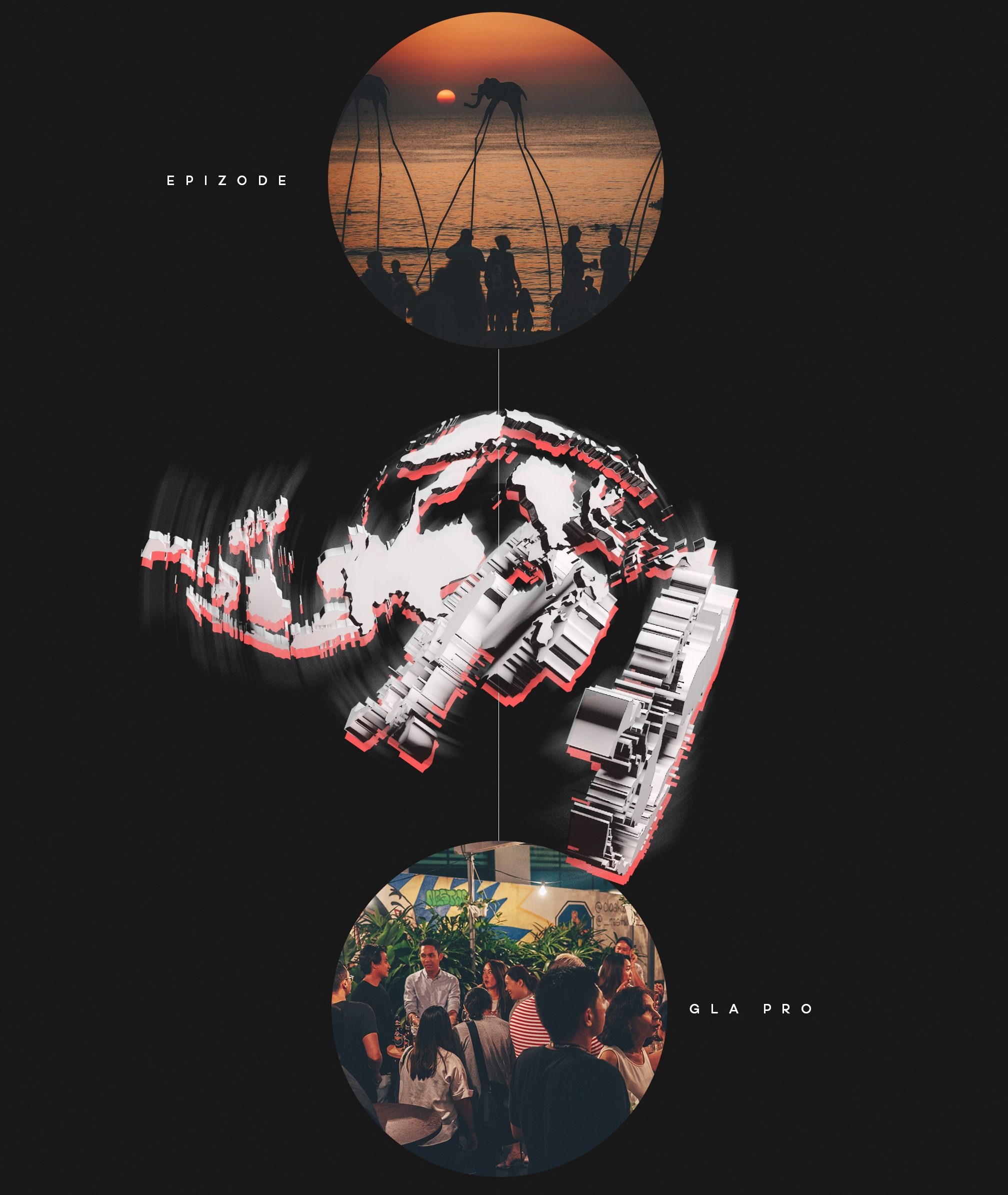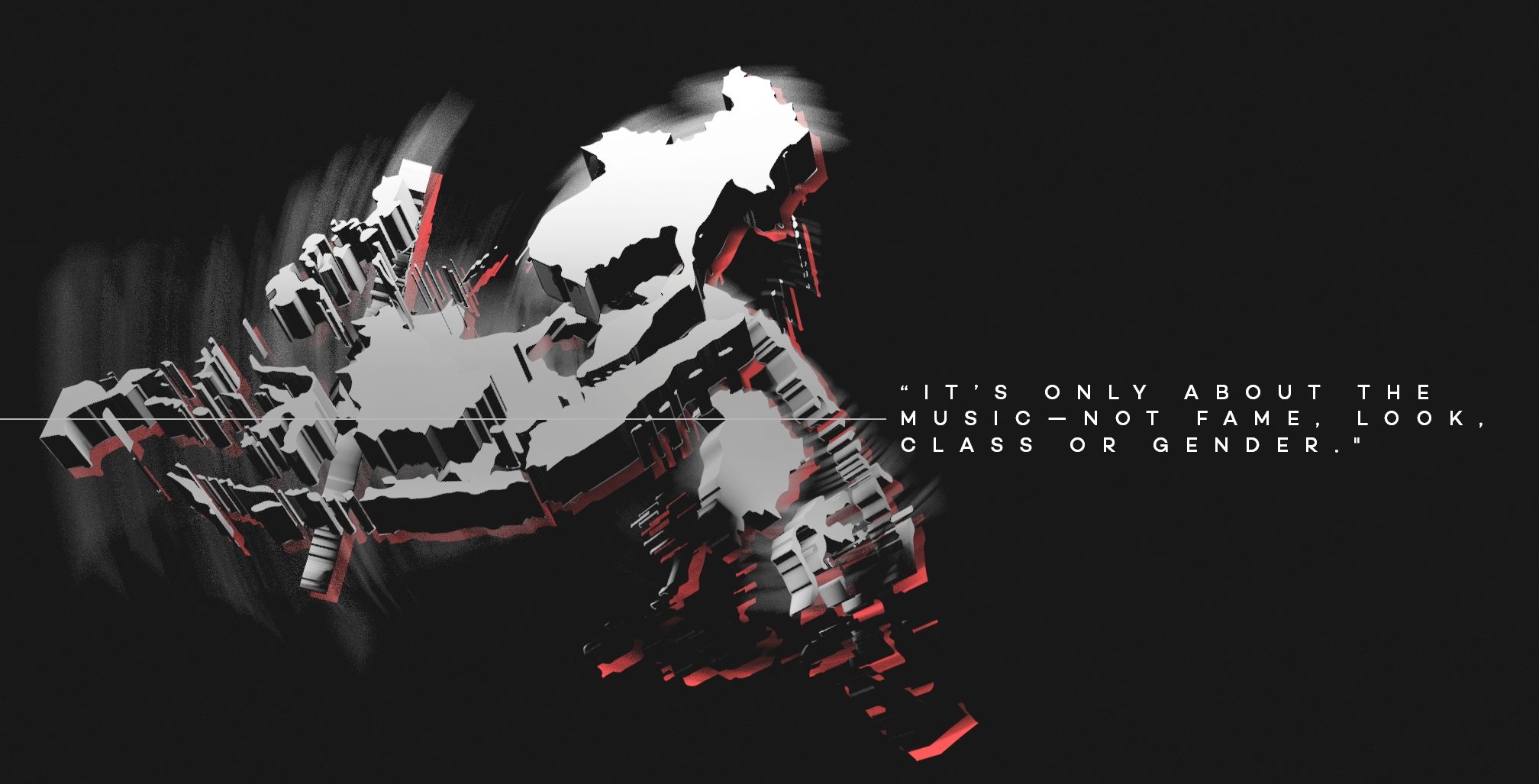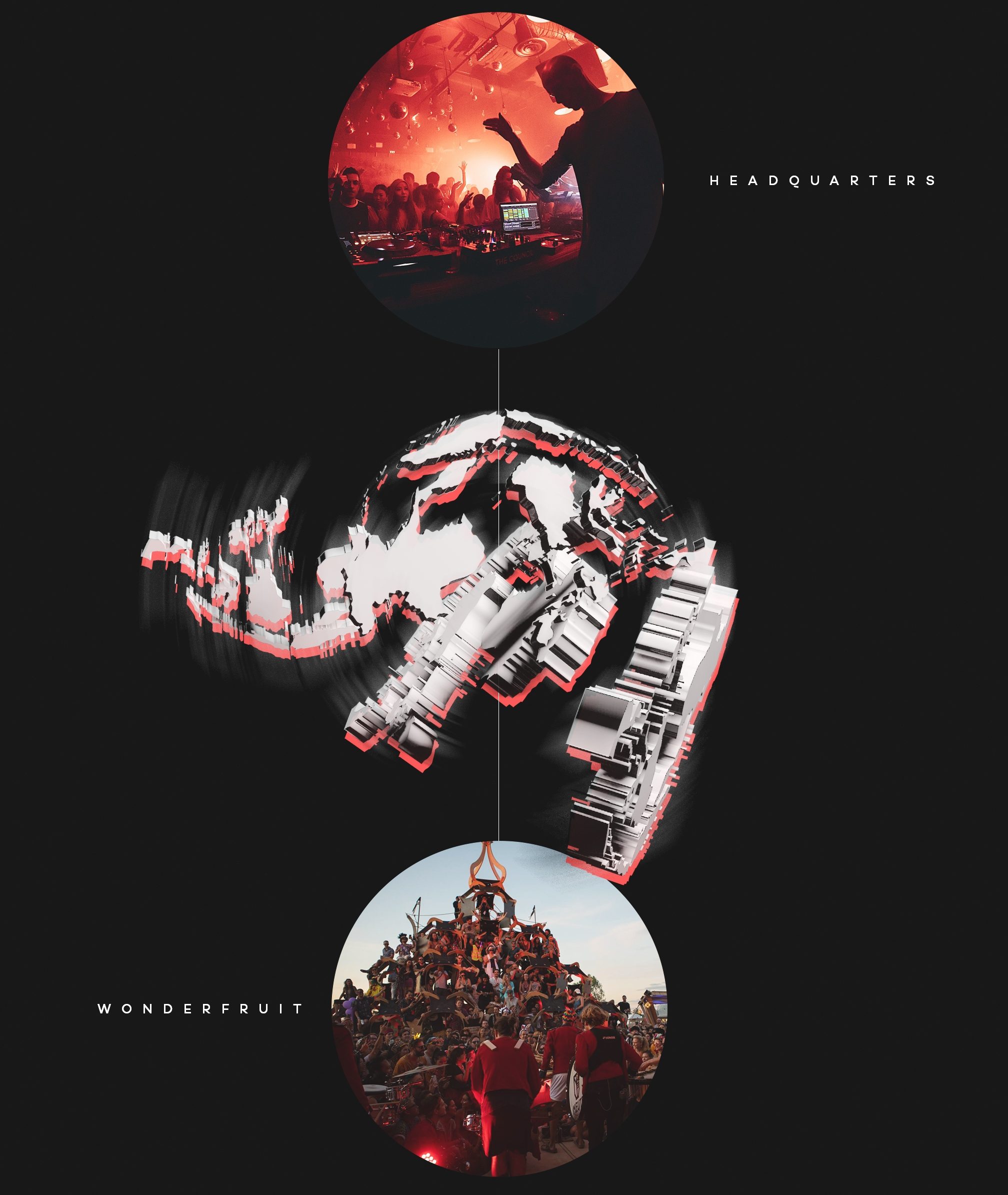 Scene reports
Scene reports
"Only about the music": Southeast Asia's underground is in a golden era
Progressive attitudes and organisations are combining to help dance music thrive in the region
One Friday, Charlotte de Witte is hypnotising dancers with tough techno. The subsequent Thursday, Recondite’s bewitching live set steals the show, before Tornado Wallace whips up euphoria days later. The next weekend Tourist, Ata Macias and Ostgut Ton’s Boris pass through. Later in the month, Resom, &ME, Detroit Swindle and Mark Fanciulli follow. This may sound like fabric’s latest calendar but it’s just another March in tiny Singapore, one of the many cities leading Southeast Asia’s exploding electronic scene.
Home to eleven countries that include Malaysia, Thailand, Indonesia, Vietnam and the Philippines, Southeast Asia is experiencing a spike in international bookings like never before. In the past, cities typically had one special event per week—now, they host techno titans and deep house luminaries just days apart.
For years, Southeast Asia lagged behind its more developed neighbours, most notably Japan and South Korea, lacking the progressive event spaces and planning infrastructure to establish the region as a dance destination. But an influx of enterprising venues, festivals and promoters, combined with better industry practices, has created an integrated ecosystem that’s put Southeast Asia on the global map. Its future has never looked brighter.

Driving the momentum is a crop of innovative clubs that have launched within the past six years. These underground temples cater to a range of styles and are respected for giving DJs the freedom to explore the full range of the electronic spectrum, from breakneck jungle to atmospheric downtempo.
In Singapore, there’s Headquarters and Tuff Club, places where Peggy Gou has spent the last three Christmases. Manila has Black Market, UNKNWN and XX XX (pronounced “twenty-twenty”), which recently hosted DFA Records’ Perel. In Kuala Lumpur, Jiro and fono do the city proud. Bangkok has BEAM, Safe Room and De Commune, where Metalheadz label manager Ant TC1 is due in April. Even smaller markets such as Vietnam are now home to adventurous spots like Hanoi’s two-year old Savage, where Ben UFO will make his Vietnam debut on April 25, and Ho Chi Minh’s The Observatory.
“Artists used to only stop by Southeast Asia en route to Japan or Australia but it’s now a destination on its own for touring artists, which was not the case five years ago,” says The Observatory’s founder Dan Bi Mong. “I receive so many offers every week that I can’t cater to all of them, it’s insane!”
Well-curated boutique festivals have also blossomed over the past six years, becoming fomo-inducing networking sites and key drivers of Asian travel. These include Epizode and Equation in Vietnam, Tao Festival and Wonderfruit in Thailand, Indonesia’s Air Festival and Bestival Bali, as well as Sonar Hong Kong.
“Within recent years, the interest of artists wanting to tour Asia has increased like 500 per cent,” says Bangkok-based Phuong Le, founder of the five-month old Homeaway Agency. Her company helps organises Asia tours and events for regional favourites such as Mendy Indigo and international heavyweights like Be Svendsen.
Previously, only big clubs and promoters could bring in foreign acts, and those were usually restricted to major headliners. The increase of performance avenues has seen bookings diversify from crowd pleasers to buzzworthy newcomers.
“Before, we were only able to make bookings from large record labels because promoters wanted a name that would sell lots of tickets - low risk, high revenue,” explains Aditya Permana, music director of Jakarta’s Hotel Monopoli and co-founder of Dekadenz, a collective based in the Indonesian capital that’s known for heady, often psychedelic, body music.
But now that more places are exploring niche sounds, there are more opportunities and more demand for smaller artists, says Jonathan “Ojon” Kusuma, an Indonesian producer affiliated with European imprints I’m A Cliché and Cocktail D’Amore. He has emerged as one of the region’s brightest names, peppering his four-to-the-floor tunes with oddball disco and spacey funk, giving them an abstract yet dark feel.
Two-year old event agencies such as Singapore’s Collective Minds and Malaysia’s Frisson 369, which have jointly brought TOKiMONSTA and Anderson .Paak to Southeast Asia, are focused on curbing the scene away from large-scale, infrequent stadium concerts towards higher volumes of small to medium sized gigs. The eventual goal is for Southeast Asian cities to become music metropolises, where going out on school nights is the norm.
And as the infrastructure develops behind the scenes, there’s a more immediate factor that keeps artists coming back to the region. Unlike established markets where underground music has become a major industry in its own right, there is still a sense of electric excitement surrounding Southeast Asia’s potential that permeates the parties and ignites the dancefloors.
“I don’t go to Southeast Asia for the money,” says Resom, aka Nadine Moser. Fees aren’t the highest but the energy is “refreshing,” the German DJ tells Mixmag en route to Singapore from China, explaining how the region reminds her of early raving days. “It’s only about the music—not fame, look, class or gender. It’s not about consuming or entertainment but about being part of a dance community. This shared sense of club community is what I miss in Berlin and most places in Europe lately.”

It’s only somewhat recently that international interest in this part of the world has piqued. Six years ago, many in the West were distrustful of Southeast Asia amid widespread cases of poor logistics and slippery promoters.
Back then, everyone was still figuring out how to deal with authorities, source equipment and face other challenges that came with growing urbanism, explains Bi Mong, whose DJ name is Hibiya Line. “Now that many of those issues have been worked on, quality in general has increased, which makes Southeast Asia more credible.”
“International agencies now have more faith in clubs and events here as we’ve all become more professional in terms of soundsystem quality, production level, club design and hospitality to artists,” says Maarten Goetheer, in-house booker for the two-story BEAM club in Bangkok. “I'm filled with pride when people like Carl Craig, Derrick May, Tom Trago or Peggy Gou tell me that BEAM is qualitatively as good or better than most of the rooms they play in Europe.”
It helps that dodgy middleman bookings are no longer common practice. “Back in the day, a lot of agents used middlemen in booking tours across Asia, often at high fees and weak logistics,” explains Priya Dewan, a former North American manager at Warp Records who now runs Gig Life Asia, a start-up offering travel packages for Asian festivals. “Shady promoters and middle agents were over promising and under delivering.”
The absence of organisation and transparency in the market prompted Dewan to start her own booking agency, Feedback Asia, in 2012. Today, she believes trust is building as more agents and managers work directly with reliable promoters. Social media also helps provide warnings against bad seeds, she added.
The situation, however, still remains far from ideal.
The region needs more clubs with strong identities, according to Eileen Chan, partner at Singaporean agency The Council, which runs Headquarters and Tuff Club. Too many owners are focused on profit rather than musical beliefs, which means they aren’t always willing to take chances on obscure acts, she explains.

It's not just foreign acts dominating Southeast Asia. A stronger local presence is growing as more people are being exposed to leftfield sounds and contributing to their country’s scene. This is an important development in a region where many still consider electronic music as a Western import.
Kin, a resident at Ho Chih Minh’s The Observatory, is one example. The young Vietnamese artist learned to DJ while working behind the club’s bar and now routinely shares the decks alongside heavyweights such as DubLab’s Tropic AZA. In Thailand, DJ/producer Nakadia is credited as a key figure for popularising techno in the EDM-obsessed country following a fairytale rise from country girl to Ibiza regular. She taught herself how to DJ in the early 2000s while living in the rural province of Isaan and now regularly plays alongside Sven Väth.
“With more venues, local DJs have a chance to hone their own sound,” says The Council’s Chan, whose DJ name is CATS ON CRACK. “When I started DJing six-to-seven years ago, a lot of people had the same vibe because they were all vying for the same gigs at the same clubs.”
Local stages at regional festivals are now equally, if not more, satisfying as international headliners, describes BEAM's Goetheer, who DJs as Maarten. “This situation is really creating a shift where bookers are investing in local acts instead of mediocre talent from the West.”
Greater efforts are now underway to support homegrown talents.
New record labels are giving young gun producers a chance to help define their region’s sonic palette. Bangkok’s Neverest Records and Ho Chi Minh’s HRBR were both launched in 2016 and feature releases from Asian artists that run the gamut of styles, from high-energy basslines to hypnotic synths.
Helping Asian artists reach wider audiences is a priority for Homeaway’s Le, whose techno alter ego is MYLE. “Our main goal is it to build a strong promoter/club circle for regional talents to showcase their music,” she explains. “We have so much talent but unfortunately most don’t have a chance to get out of their city.”
That’s gradually changing as better communication and information sharing amongst promoters produces a structured touring circuit. It’s much easier for local DJs to do a Southeast Asia tour than five years ago as communities grow more integrated, according to Kusuma and others.
With more venues and promoters, certain acts can get four to six gigs across the region compared to two or three previously, adds Zach Kim, or DJ Zig Zach, founder of four-year old Blackout Agency in Singapore. It helps that newer cities such as Hanoi, Phnom Penh and Yangon are starting to open up, he continues.

Like elsewhere in the world, inflated artist fees are a major obstacle for regional promoters. Those who agree to sky-high rates typically resort to large-capacity venues, which often don’t match the music, and still incur losses despite sold-out tickets.
“Most Western artists are delusional in terms of what they can expect fee-wise,” says Rahul Kukreja, partner at Frisson 369. International managers need to understand that Southeast Asia’s scene is still growing and artists have to grow with it, he explains.
To combat the issue, Southeast Asian promoters regularly work with each other on regional tours—the more cities a DJ plays, the cheaper the flights. In Jakarta, for example, Dekadenz usually links up with promoters in other parts of Indonesia, such as Bali or Bandung, to share costs.
“We believe in levelling the playing field so if we book a high-tier artist for an event, we’ll usually offer them to venues and other promoters across the region, many of whom are friends,” says Matt Porter, head honcho of Manila-based Redbox Asia, an events and booking agency that works with Clap! Clap!, Al Dobson Jr and Rich Medina among others.
Encouraging the spirit of cross-border cooperation is now the focus of Gig Life Pro, Dewan’s latest venture. It organises meet-ups for music industry professionals to connect with each other and “do better business,” she explains.
But due to weak currency power in countries like Malaysia and the Philippines, additional support from corporate or government sponsors is needed to make events possible. Alcohol brands such as Jameson and Absolut now routinely invest in parties, while government tourism ministries are gradually beginning to realise the importance of reputable nightlife.
But state support is far from entrenched, and politics is often an obstacle. Conservative governments, concerned about cases of drug abuse, are growing wary of music festivals and their impact on public safety.
In Manila, the government’s war on drugs has hit nightlife hard, explains Porter, noting how big venues are down to smaller capacities. Meanwhile in Vietnam, the 2018 edition of six year-old Quest Festival got cancelled at the very last minute after authorities suddenly withdrew the event’s license. The move, reflective of Vietnam’s challenging business environment, was later seen as a government safety measure following drug-related deaths at Hanoi’s Trip to the Moon festival a few months earlier.
Authorities across the region must take cues from Europe and realise that the night-time and music economy is lucrative and not damaging, says Eric Volta, a London-based producer who grew up in Singapore and has since released under Maceo Plex’s Ellum label.
Meanwhile, the region still lacks pirate radio. Grassroots ventures such as Singapore Community Radio and Bali’s Paddy Grooves Radio have emerged in recent years but it’s yet to take off elsewhere. Also missing is a website dedicated to Asian electronica, which Blackout Agency’s Kim is currently pursuing.
“The development of music culture is a long-term process and there is no need to rush things,” says The Observatory’s Bi Mong. “People have been talking about a regional scene here for a few years but in my opinion, it’s only starting now.”
Nyshka Chandran is a journalist covering music, culture and politics in Southeast Asia, follow her on Twitter
Lawrence Abbott is Mixmag's Creative Designer, follow him on Instagram
Read this next!
The New East: Kazakhstan's underground is on the map
We went undercover in a Chinese MDMA factory
Meet the five MCs and producers at the forefront of grime in Japan
Women dancers are leading Manila's burgeoning dancehall culture


